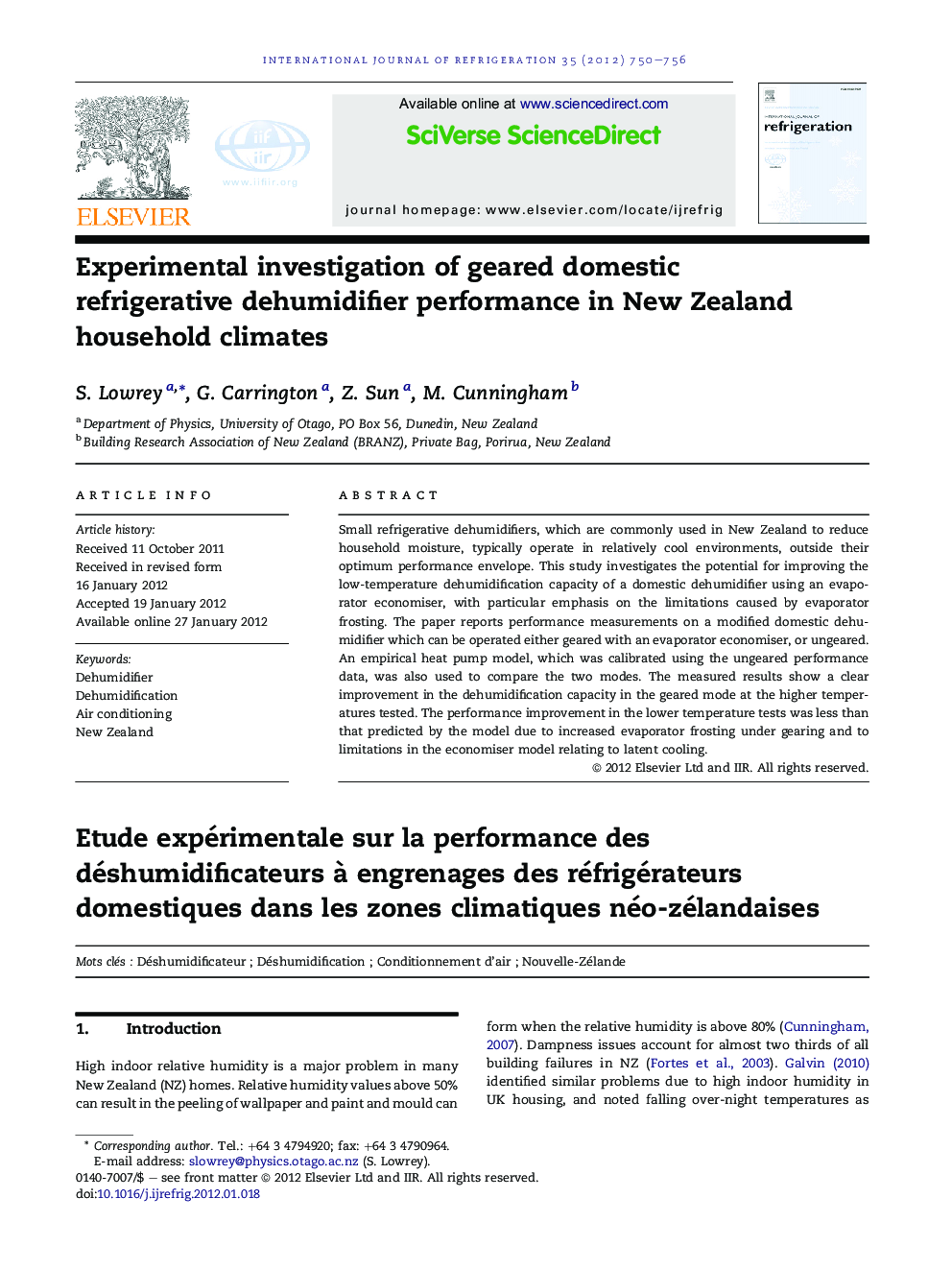| Article ID | Journal | Published Year | Pages | File Type |
|---|---|---|---|---|
| 790337 | International Journal of Refrigeration | 2012 | 7 Pages |
Small refrigerative dehumidifiers, which are commonly used in New Zealand to reduce household moisture, typically operate in relatively cool environments, outside their optimum performance envelope. This study investigates the potential for improving the low-temperature dehumidification capacity of a domestic dehumidifier using an evaporator economiser, with particular emphasis on the limitations caused by evaporator frosting. The paper reports performance measurements on a modified domestic dehumidifier which can be operated either geared with an evaporator economiser, or ungeared. An empirical heat pump model, which was calibrated using the ungeared performance data, was also used to compare the two modes. The measured results show a clear improvement in the dehumidification capacity in the geared mode at the higher temperatures tested. The performance improvement in the lower temperature tests was less than that predicted by the model due to increased evaporator frosting under gearing and to limitations in the economiser model relating to latent cooling.
► We compare dehumidification performance of an ungeared and geared refrigerative dehumidifier. ► Improvements in dehumidification are shown to agree with model predictions at relatively high temperatures. ► No improvement is achieved with gearing at relatively low temperatures. ► We conclude that frosting will remain a problem unless the evaporator, and possibly the air flow rate, are modified.
